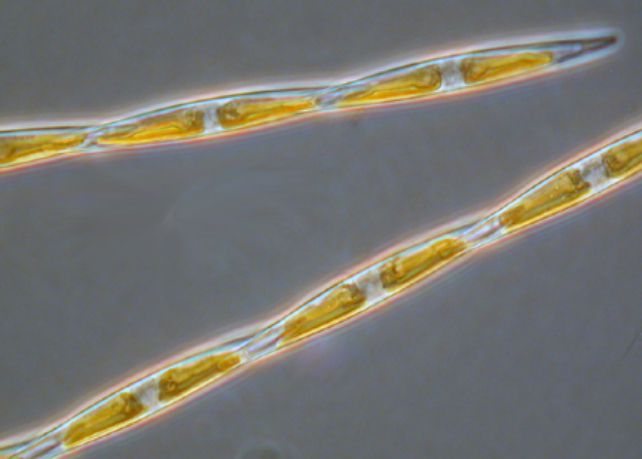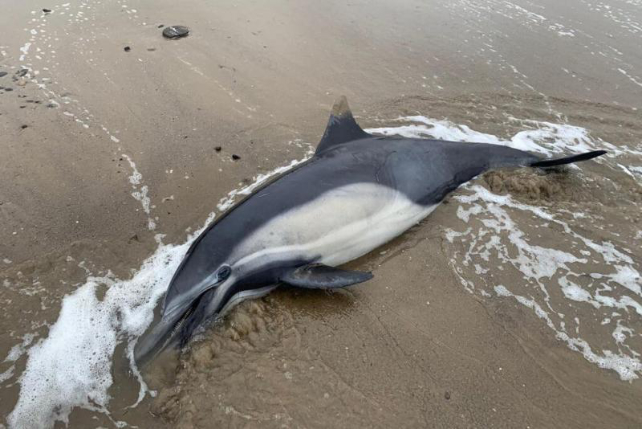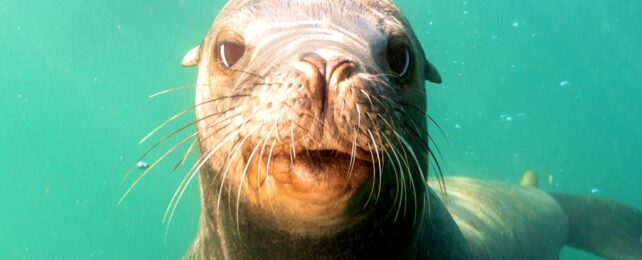More than a thousand Californian sea lions have been poisoned by a toxic algae bloom that can cause seizures, brain damage, and death.
Across California's beaches, sea lions have been exhibiting strange behaviors like swaying their heads back and forth, frothing at the mouth and being unusually violent when touched.
Sea lions aren't normally aggressive towards humans, but there have been at least five instances where sea lions have bitten beachgoers in recent weeks.
They aren't intentionally attacking humans, says Alissa Deming, a vet at the Pacific Marine Mammal Center in Orange County. Biting is just a natural reflex when a sick, disorientated sea lion is spooked or bumps into something, she says.
Marine mammal rescuers in the area have received up to 300 reports a day of sea lions in distress, and 150 sea lions have been found dead. Wildlife rescuers have cordoned off areas with sick sea lions, cautioning the public not to move, pour water on, or disturb the animals in any way. People should stay about 50 feet (16 meters) away from unwell sea lions.
"About the length of a school bus is ideal," says the Channel Islands Marine and Wildlife Institute. From there it is safe to observe the animal's behavior and report its exact location if the animal is showing signs of distress.
This catastrophe might be linked to an imbalance of nutrients in the ocean driven by the combined consequences of climate change and El Niño, as well as pollutants from human activities. In turn, microscopic marine plankton called pseudo-nitzschia surged in numbers – a phenomenon known as a 'red tide'.
Pseudo-nitzschia produces the powerful neurotoxin domoic acid. Fish gorge on the algae, and the neurotoxin accumulates in the food chain. Sea lions, which mostly feed off anchovies and sardines, are particularly vulnerable.

June is the time of year when around 70,000 female sea lions travel to the Channel Islands near Los Angeles to give birth to their pups. Unfortunately, this has collided with the harmful algae bloom. Dozens of dolphins have also died from the toxin.
"This is the worst domoic acid event I've ever seen," Deming tells the Los Angeles Times, "and I've worked here for over 10 years."
Over the past 20 years, California has seen five other harmful algae blooms.

Usually, sea lions will naturally flush the toxin after three days. But they can also die if they have too high a dose of domoic acid in their diet.
Rescuers have been relocating very sick animals to facilities where they are treated by a vet, and usually given fluids, non-toxic fish, and anti-seizure medications.

Domoic acid can also build-up in shellfish, lobsters, crabs, or clams. In humans, this toxin can cause 'amnesic shellfish poisoning', with symptoms that include diarrhea, nausea, seizures, coma, irreversible memory loss, and death.
Six people died and 100 fell ill from eating toxic shellfish in California in 1927. Since then, the state has closely regulated seafood markets, enforcing closures when domoic acid levels are too high.
Curiously, the 1963 horror movie The Birds was quite possibly inspired by an incident of domoic acid poisoning.
Two years before the movie was released, crazed seabirds were spotted pelting the shores of California, regurgitating anchovies. An analysis of zooplankton in archival samples demonstrated that pseudo-nitzschia were present in high numbers at the time.
